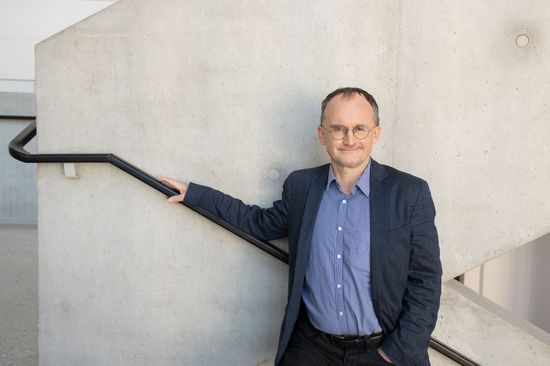For the first time in human history, more people are living in urban environments than in the countryside. The challenges associated with this development and climate change demand sustainable solutions. Sustainable development of cities calls for comprehensive planning processes which combine economic and social, technological and scientific thinking.
The researchers at TU Wien are taking up this task and making an important contribution with their expertise in the most diverse areas relating to energy-active buildings, settlements and spatial infrastructures. They are researching innovative technologies to enable the use of environmentally sound, energy efficient and resource-saving buildings (and renovation work) and drive forward the development of sustainable housing schemes. Furthermore, they are striving to strengthen the connection between social and ecological aspects and offer people who live in cities even better infrastructure and the best possible spatial environment.
Intelligent, energy-efficient and eco-efficient buildings
Rising technical, economic and environmental law requirements are making planning, construction and operation of innovative buildings with corresponding architecture increasingly complex. The focus is on energy-efficient buildings which stand out, above all, due to environmentally and climate friendly construction and renovation – careful use of energy, raw materials and space is the key issue of the 21st century. This is why at TU Wien, within the framework of integral planning, researchers from a number of disciplines are working together to develop comprehensive, holistic concepts, which are based on resource-saving building materials, energy-efficient systems, renewable energy sources and integrated building automation.
In addition to ecological compatibility, user behaviour is also taken into account to create the best possible spatial environment. Naturally, economic viability and affordability are taken into account in all scientific projects. The experts at TU Wien rank among the leading urban developers in Europe with this approach contributing their expertise in the most renowned and innovative projects.
An appropriate understanding of the diverse connections and interactions in structures is essential when it comes to professional planning of buildings and property. The research groups at TU Wien have sophisticated modelling, simulation and evaluation systems which they couple with their many years of experience and extensive technical knowledge.
Measurements are input into these systems to assess and model highly complex interacting problems. Solutions to these challenges include intelligent building automation, networking of sensors, actuators and controllers for control and regulation as well as innovative building concepts which increase quality of living and also save resources.
Spatial infrastructure and planning
Researchers at the TU Wien use sustainable urban and regional development to increase the quality of life and safety of the population. This not only takes into account the changing demands for environmental friendliness and road safety, but also the new challenges in the field of municipal mobility. Detailed data provided by research groups at the TU Wien forms the basis for in-depth planning and sustainable mobility concepts. The city of the future takes into account the requirements of multi-modal lifestyles and is based on the promotion of non-motorised, active and accessible private transport, to reduce emissions and noise and further improve quality of life.
The bigger the city, the more difficult it is to manage – an effective settlement and building structure plays an important role in this regard. Urban environments in particular require new design concepts which make flexible use of public spaces possible. Research teams at TU Wien are working on environmentally friendly and resource-conserving solutions for sustainable cities and their visualisation, and can thereby make urban systems more adaptable to climate change. One of the central microclimatic problems is the urban heat island – a green network of green spaces and expanses of water, green façades, air circulation and open spaces fulfils different functions and helps to improve the urban climate.
Urban and spatial development for the future
- Regional development
- Settlement and building structures
- Urban traffic and municipal mobility
- Urban area simulation
- Overall economic picture
Energy and resource-efficient buildings (active/passive house)
- Eco-efficient construction
- Use of renewable energy sources
- Building concepts and resource optimisation (building envelope, building technology, etc.)
- Simulation and optimisation, overall system
Intelligent buildings and settlements
- Building monitoring
- Smart and distributed systems
- Building automaton and integration
- Energy management (microgrid, smart meter)
Innovative property management and infrastructure
- Building stock (evaluation of current situation, renovation)
- Integral energy-efficient planning
- Life cycle analysis
Sociological and ecological aspects
- User behaviour and consumption patterns
- Microclimate and spatial environment
- Innovative and ecological construction materials
- Effects of climate change, macroclimate
Architecture and Planning and Civil Engineering are the main faculties active in this research field, along with Electrical Engineering and Information Technology and Informatics. Research groups from 20 institutes make an interdisciplinary contribution towards an innovative, sustainable city. Research activities are in applied research with a strong link to basic research activities.
The third-party funding obtained in 2016-2018 for research projects in this field of research is approximately 1.5 million euros per year (around 82 projects). In terms of academic output, there has been a significant rise in SCI publications in recent years.
All data and information provided relates to the research period 2016-2018 (based on the period of the Performance Agreement).
![[Translate to English:] Gebäude](/fileadmin/_processed_/a/e/csm_E1_titelbild_8512b90c61.jpg)
![[Translate to English:] E1](/fileadmin/_processed_/e/9/csm_TU_En_Um_Icon_Gebaeude_e821589239.jpg)


